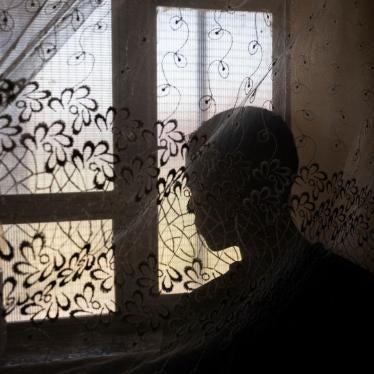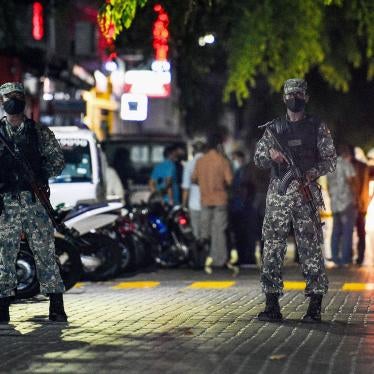In Trump’s New Drone Strike Policy: What’s Any Different? Why It Matters, Luke Hartig astutely flags some – but not all – of the key dangers in the Trump administration’s reported plan to rescind many, if not most, rules for US lethal operations against terrorism suspects outside conventional warzones. What Hartig largely ignores is how flaws in the existing targeted killing policy, crafted under President Barack Obama, helped pave the way for President Donald Trump to kill more civilians.
“Based on initial reports, it’s actually not nearly as bad as we might have feared,” Hartig writes of the proposal, which would make it easier for the United States to kill more people off the battlefield with less oversight, greater secrecy, and no due process. Hartig notes that the plan is more tempered than Trump’s campaign vow to “take out” not only Islamic State members but also their families. That’s a perilously low bar to assess a dismantling of already insufficient rules for a program that has killed thousands of people in countries including Pakistan, Somalia, and Yemen—the vast majority of them during Obama’s presidency. Debates rage over how many of those were killed lawfully and how many were civilians.
The Trump administration proposal, reportedly advanced by his top national security advisers, would scrap protections that Obama approved in 2013 for lethal targeting, including the core requirement that the target pose a “continuing, imminent threat” to American lives. In an exclusive New York Times report, the Trump team rationalizes that dropping this safeguard will allow the US to kill not only the people it deems to be in the top echelon of a terrorist group but also those it considers lower-level members, even if they are far from any battlefield, and in countries such as Nigeria and the Philippines where the US is not already conducting such strikes. That Obama rule was already a fig leaf, as I explain shortly, but it may have been better than nothing.
The Times reported that administration officials have advised Trump to retain another much-touted Obama rule, which says that strikes cannot take place absent “near-certainty” that civilian bystanders would not be killed. The possibility that Trump may keep that provision, Hartig proclaims, is nothing less than “a dramatic affirmation that minimizing civilian casualties is both a moral and strategic imperative.” More broadly, he writes, the “mere fact” that Trump even has a set of guidelines for operations outside warzones is “a huge vindication of the Obama approach to overseeing drone operations and the extent to which that approach has been institutionalized by career counterterrorism professionals.”
Since Hartig was Obama’s counterterrorism director at the National Security Council and, before that, the deputy counterterrorism director in the office of the defense secretary, it’s understandable that he heralds his successors for prodding Trump toward replacing rather than obliterating the killing rules he helped craft and implement. But even if we accepted Hartig’s argument that the Trump proposal is better than no plan at all, this does not excuse its flaws. Nor should even our qualified acceptance obscure the fact that Obama’s guidance for killing terrorism suspects outside war zones contained glaring loopholes for taking civilian lives that the Trump proposal exploits.
Let’s return to the Trump team’s plan to scrap Obama’s rule that a suspect must present a “continuing, imminent threat” to be targeted for death. On the face of it, that Obama rule was his pledge to protect human life even more than he arguably had to. Obama, like his predecessor and successor, contended the US is engaged in an armed conflict without geographical boundaries with groups like al-Qaeda and the Islamic State, which spreads beyond conventional warzones such as Afghanistan and, later, Syria and Iraq. Therefore, Obama contended, the laws of war apply to killings of alleged enemy combatant members of those groups wherever they are, even far from any battlefield.
But the US government has yet to make the case that such hostilities outside conventional warzones have reached the threshold and intensity of an armed conflict. Until and unless the government does so, the default legal framework within which the United States operates should be the law-enforcement model of international human rights law, which in contrast to the less restrictive laws governing armed conflict only allows lethal targeting in order to protect an imminent threat to life. Applying a “continuing, imminent threat” standard to wartime operations means fewer people could be killed, but applying that standard outside of an armed conflict means more people could be killed, and they would likely be killed unlawfully. That’s because the “continuing imminent, threat” is a far broader category than the imminent threat to life under human rights law.
Hartig dismisses, or at least too easily sets aside, the obligation to apply the law-enforcement model to US killings outside conventional conflict zones as a “debate.” He then gives Trump a green light to take Obama’s refusal to recognize that obligation in the counterterrorism context even further. “It is important to squarely face the security rationale for doing away with this standard,” Hartig writes. “The problem with the continuing, imminent threat standard is that it often conflicts with best practices for targeting terrorist networks.” But best practices are only the best if they are lawful.
The problem with Obama’s “continuing, imminent threat” rule was that his administration never publicly defined how immediate a threat must be to qualify as “imminent” – could it be an hour, a month, or a year? Nor did it explain the contradiction of a threat that could be both imminent and “continuing.” And in any case, as The New York Times article notes, the Obama administration at times dispensed with that standard. How often it did so was one of the Obama presidency’s many drones-related secrets.
Were Trump to retain the Obama rule that an airstrike or commando raid outside a conventional warzone can only take place if there is “near-certainty” that no civilians will be killed, that would be a positive step indeed—provided the measure is followed in practice. But as my research in Yemen suggests, Obama also at times disregarded the near-certainty provision, including during a strike on a Yemen wedding procession.
Already, the research by Human Rights Watch and other groups raises serious questions about the Trump administration’s commitment to protecting civilian lives during such operations. Importantly, in March, Trump officially suspended all provisions in Obama’s 2013 rulebook in large areas of Yemen and Somalia, although as Hartig notes, the US commander for Africa has said he retained the near-certainly rule in Somalia anyway. What’s to stop him from suspending it time and again in the future, and the public never being told otherwise? Who’s to say where on the map he will actually declare places “outside of areas of active hostilities” (a condition required for the rules to apply)?
The Trump team proposal also reportedly would substantially reduce the level and frequency of high-level, interagency vetting, shifting more authority to the CIA and the Pentagon to carry out drone strikes and other lethal operations outside conventional warzones. Under Obama, strikes required prior approval from top officials from the Departments of State, Defense, Justice, and Homeland Security, as well as the director of national intelligence, CIA, the National Counterterrorism Center, and Joint Chiefs of Staff. Absent consensus, the president made the final call. While cautioning that the devil is in the details, Hartig is comfortable with streamlining the process and shifting approval authority to the Pentagon, with the important provisos that a broader interagency national security team hold the defense secretary accountable and that additional national security agencies have regular opportunity to review. But Obama’s review process was cumbersome for a reason: human lives were at stake. Fewer layers of review invites greater disregard for “near-certainty” that civilians will not be harmed.
Trump’s advisers propose easing the vetting not just for US military actions but also for CIA drone strikes, which the new guidelines would permit the covert agency to carry out in Afghanistan – a country where the US is undisputedly engaged in armed conflict. Less vetting could mean fewer safeguards against the CIA killing people without sufficient legal justification. Already, transparency even on strikes in Afghanistan by the US military is insufficient, although CENTCOM does release information on wartime operations and casualties. Transparency on strikes in neighboring Pakistan by the CIA, whose mission is covert, is nil, and it would remain so in Afghanistan as well. Without transparency on who and how many people the US is killing and why, there is no way to hold those responsible to account when strikes go wrong, as the laws of war require.
Citing US top brass, Hartig rightly notes that saving civilian lives is a strategic as well as moral imperative, helping garner local support and “preventing terrorists from using civilian casualties as a rallying and recruitment cry.” Obama’s rulebook in many ways paid mere lip service to that strategy. Notwithstanding Hartig’s optimism, the loopholes Obama passed along to the new administration enable Trump to do the same, and then some.










